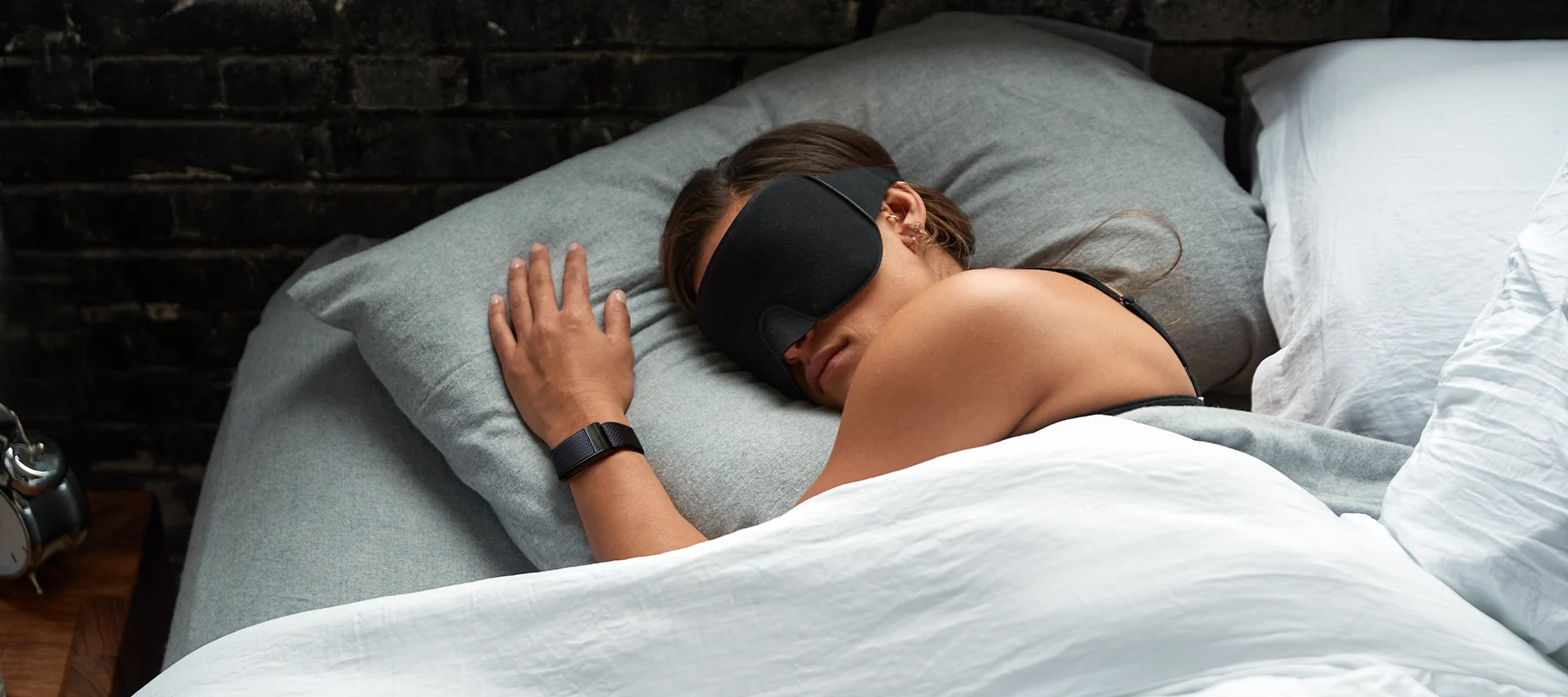Topics
- Article
- Sleep
How Light Sleepers Can Get More Sleep

Light sleepers wake up easily throughout the night in response to small disturbances in their environment. There are medical and nonmedical reasons for the problem. Here are a few things you can do to get a good night’s sleep.
Whether it’s headlights from a passing car or the pitter patter of cat feet that wakes you up for the umpteenth time in a night, light sleepers deal with problems that the rest of us usually sleep through. Having your sleep interrupted by things out of your control is more than frustrating. It can also affect your mood, metabolism and immune system.
What is a Light Sleeper?
Being a light sleeper is different from light sleep. Light sleep is one of four stages of sleep: The others being wake, slow wave sleep, and rapid eye movement (REM) sleep. We enter the light sleep stage first as part of a sleep cycle. Light sleepers wake up in response to small disturbances, like noise from wind in the trees or a partner rolling over in bed next to you. They also tend to spend more time in light sleep than heavy sleepers. This is why getting a good night’s sleep can be more difficult for light sleepers. Symptoms of being a light sleeper include:
- Feeling tired throughout the day
- Wanting or taking a nap during the day
- Having trouble falling asleep at night
- Waking up frequently throughout the night

WHOOP monitors your sleep and shows you how long you spend in each sleep stage. It can help you spot anomalies such as unusual wakings.
Why are Some People Light Sleepers?
Researchers haven’t found a single reason why some people have more difficulty staying asleep than others, but some light sleepers may have a low “arousal threshold,” the minimal intensity at which a stimulus triggers an arousal during sleep. Your arousal threshold is affected by several factors including the state of sleep you’re in, how long you were awake, anxiety, and age. Older adults are more prone to waking during the night and they sleep less overall. Other causes may be undiagnosed sleep disorders, genetics, or lifestyle choices like drinking caffeinated beverages late in the day. Sleep disorders could include insomnia, snoring (a partner may be able to diagnose this), and sleep apnea. Poor sleep is related to long-term health issues such as high blood pressure, heart disease, obesity, and type 2 diabetes.
How Sleep Spindles Affect Sleep
Sleep researchers have identified brain-wave spikes called “sleep spindles.” These spindles are bursts of brain waves during non-REM sleep and appear to protect sleepers from waking up in response to noise. Research has shown that sleepers with more sleep spindles tend to sleep more soundly and deeply, while sleepers with fewer sleep spindles tend to wake more easily. This may help explain why older people are light sleepers, since they produce fewer sleep spindles.
9 Sleep Tips for Light Sleepers
There are several things light sleepers can do to improve their sleep, including:
- Get some sunlight. Sunlight plays a central role in regulating your circadian rhythm. Exposure to sunlight early in the day can reinforce your circadian rhythm.
- Train yourself to sleep. Create a bedtime routine and work on your sleep hygiene. Set and follow a sleep schedule every day, even days off.
- Don’t nap during the day. Naps can be refreshing, but they can also be problematic. You nap because you’re tired but then you can’t sleep at night. Skip napping when you’re training yourself to sleep at night.
- Avoid caffeine. Don’t drink coffee or caffeinated beverages in the afternoon. You may also want to avoid chocolate, tea, and any medications and other products that have caffeine. Caffeine blocks adenosine receptors in the brain. Adenosine is a sleep-promoting chemical your brain produces during waking hours. The more it builds up, the sleepier you are. When caffeine interferes with this process, you remain alert.
- Steer clear of alcohol. Alcohol inhibits your quality of sleep and can prevent you from entering the restorative stages of sleep.
- Turn off the electronics. Avoid blue light for 30-60 minutes before bedtime. Blue light directly affects your circadian rhythm. If you do watch TV or play with your phone, try wearing blue-light blocking glasses.
- Keep your bedroom dark, cool and quiet. Take out the TV and charge your phone in another room. Set the thermostat between 60-67 degrees Fahrenheit. When you get into bed, you’ll have a cozy blanket to snuggle under in a cool, quiet room.
- Block noise. When nightly noise is bothersome, consider using a white noise machine or leaving a fan on. The hum can help mask other noises.
- Wear an eye mask. If your partner’s midnight bathroom trip wakes you up, consider wearing an eye mask. Light exposure at night can impede transitions between sleep cycles and reduce the quality of sleep.
If these methods don’t work, you might want to consider speaking to a medical professional about your personal medical history. A doctor may be able to provide recommendations, refer you to a specialist or prescribe medications to help you sleep more soundly. Learn More: 28 Tips to Fall Asleep Fast
WHOOP Can Help You Learn More About Your Sleep Patterns
WHOOP automatically detects your sleep and helps you understand your sleep quality, cycles, and duration. It also shows you how much time you spend in each stage, including when you’re awake. Using the data, you can monitor your sleeping patterns and learn more about how you sleep. WHOOP Sleep Planner uses your circadian rhythm, previous sleeps, naps, and daily strain to make recommendations on bed and wake times to help you maximize your sleep. Additionally, Sleep Planner includes haptic alerts that act as a gentle vibrating alarm to wake you when you’ve hit your sleep goals or when you need to get up.